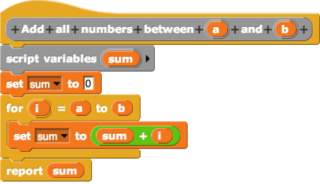
MATLAB is a proprietary multi-paradigm programming language and numeric computing environment developed by MathWorks. MATLAB allows matrix manipulations, plotting of functions and data, implementation of algorithms, creation of user interfaces, and interfacing with programs written in other languages.

Wolfram Mathematica is a software system with built-in libraries for several areas of technical computing that allow machine learning, statistics, symbolic computation, data manipulation, network analysis, time series analysis, NLP, optimization, plotting functions and various types of data, implementation of algorithms, creation of user interfaces, and interfacing with programs written in other programming languages. It was conceived by Stephen Wolfram, and is developed by Wolfram Research of Champaign, Illinois. The Wolfram Language is the programming language used in Mathematica. Mathematica 1.0 was released on June 23, 1988 in Champaign, Illinois and Santa Clara, California.
In software engineering and computer science, abstraction is the process of generalizing concrete details, such as attributes, away from the study of objects and systems to focus attention on details of greater importance. Abstraction is a fundamental concept in computer science and software engineering, especially within the object-oriented programming paradigm. Examples of this include:
Natural-language understanding (NLU) or natural-language interpretation (NLI) is a subset of natural-language processing in artificial intelligence that deals with machine reading comprehension. Natural-language understanding is considered an AI-hard problem.
A modeling language is any artificial language that can be used to express data, information or knowledge or systems in a structure that is defined by a consistent set of rules. The rules are used for interpretation of the meaning of components in the structure of a programming language.
In computer science, a software agent is a computer program that acts for a user or another program in a relationship of agency.

In computing, a visual programming language, also known as diagrammatic programming, graphical programming or block coding, is a programming language that lets users create programs by manipulating program elements graphically rather than by specifying them textually. A VPL allows programming with visual expressions, spatial arrangements of text and graphic symbols, used either as elements of syntax or secondary notation. For example, many VPLs are based on the idea of "boxes and arrows", where boxes or other screen objects are treated as entities, connected by arrows, lines or arcs which represent relations. VPLs are generally the basis of Low-code development platforms.
The following outline is provided as an overview of and topical guide to human–computer interaction:
In computer science, automatic programming is a type of computer programming in which some mechanism generates a computer program to allow human programmers to write the code at a higher abstraction level.

A dialogue system, or conversational agent (CA), is a computer system intended to converse with a human. Dialogue systems employed one or more of text, speech, graphics, haptics, gestures, and other modes for communication on both the input and output channel.
End-user computing (EUC) refers to systems in which non-programmers can create working applications. EUC is a group of approaches to computing that aim to better integrate end users into the computing environment. These approaches attempt to realize the potential for high-end computing to perform problem-solving in a trustworthy manner.
The following outline is provided as an overview of and topical guide to artificial intelligence:
A concept search is an automated information retrieval method that is used to search electronically stored unstructured text for information that is conceptually similar to the information provided in a search query. In other words, the ideas expressed in the information retrieved in response to a concept search query are relevant to the ideas contained in the text of the query.
Natural-language user interface is a type of computer human interface where linguistic phenomena such as verbs, phrases and clauses act as UI controls for creating, selecting and modifying data in software applications.
The following outline is provided as an overview of and topical guide to natural-language processing:
This glossary of artificial intelligence is a list of definitions of terms and concepts relevant to the study of artificial intelligence, its sub-disciplines, and related fields. Related glossaries include Glossary of computer science, Glossary of robotics, and Glossary of machine vision.
A conversational user interface (CUI) is a user interface for computers that emulates a conversation with a real human. Historically, computers have relied on text-based user interfaces and graphical user interfaces (GUIs) to translate the user's desired action into commands the computer understands. While an effective mechanism of completing computing actions, there is a learning curve for the user associated with GUI. Instead, CUIs provide opportunity for the user to communicate with the computer in their natural language rather than in a syntax specific commands.
This glossary of computer science is a list of definitions of terms and concepts used in computer science, its sub-disciplines, and related fields, including terms relevant to software, data science, and computer programming.



